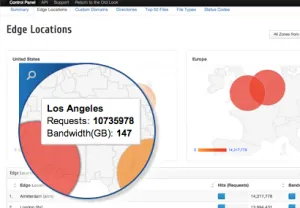AWS Acknowledges India Growth by Setting up Edge Locations
Since the time AWS started its APAC operations (which was in 2010), one question that was always asked by the Indian customers was about the AWS India region. While not exactly a region, Amazon has announced the availability of the edge locations for their CDN and DNS service called Amazon CloudFront and Amazon Route 53 respectively. This particularly boosts the performance of media and content driven websites hosted on AWS.

Content Delivery Network or CDN takes the content like images, videos, CSS files and scripts and caches them across an array of servers spread all over the globe called as edge locations. When a customer accesses the website, his browser will automatically gets routed to the nearest edge location to fetch the content. This offers better experience by reducing the latency between the browser and the origin of the content. For example, when a customer in India accesses a website hosted in the USA, all the static content will be fetched from a location within India while the dynamic content is rendered and delivered from the original location which is USA. With today’s announcement, AWS has launched not just one but two edge locations in Mumbai and Chennai. This brings the overall count of AWS global edge locations to 42. Existing AWS customers from the media vertical including Hungama, Zenga Media, NDTV and others will benefit from this as it offers better response rates to their customers. Global customers of AWS will take advantage of this by tapping into the new edge locations.
Domain Naming Service or DNS acts like a telephone address book by translating human readable domain names to the IP addresses. This service is distributed across the globe to facilitate faster resolution of the lookup. Amazon Route 53 offers a reliable and scalable DNS service through a pay-as-you-go subscription. By leveraging the same infrastructure of Amazon CloudFront, AWS will be able to host Route 53 service closer to the customers. With this announcement, Amazon Route 53 will be available in India based edge locations as well.
AWS has seen tremendous adoption in India since the launch of the AWS Southeast Region in Singapore in 2010. According to the official AWS blog, there are over 8000 customers in India and the list is growing. This investment is an indication that AWS is keen on making their presence felt in the Indian subcontinent. Does this mean India will be soon an AWS Region? Well, going by the pattern, India may well be an official AWS Region in the near future. Before announcing the Sydney and Sao Paulo Regions, Amazon has setup the Point of Presence (PoP) first. For example, Sydney got the PoP on June 19th last year and the AWS Region went live on November 12th. Going by that trend, I am sure that the AWS India Region is on the cards!

Amazon never discloses where the services are hosted within a specific geography. But given the location of Chennai and Mumbai, we can make an educated guess that they bought the infrastructure from Tata Communications, Netmagic or both. I do not rule out Reliance as they have an existing relationship to provide the peering to AWS Singapore in partnership with Equinix. Given the scale of AWS, they will invest across multiple providers though some of these providers offer cloud and directly compete with AWS.
This announcement directly hurts Akamai, the leading CDN provider whose differentiation has always been the wide presence of the edge locations in India. This also widens the gap between Microsoft Windows Azure and AWS in India as customers prefer to have their content delivered locally vs. a server in Singapore. Overall, this is great news for the Indian IT ecosystem as it drives better adoption of Cloud.






